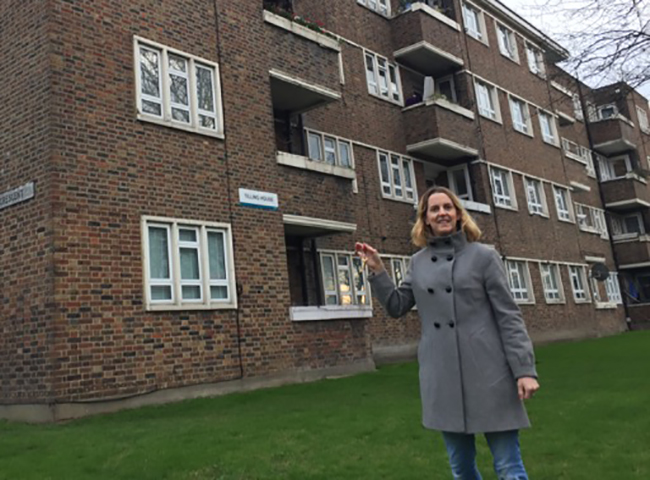Fancy buying a second property in 2017? Jonathan Daines, CEO of lettingaproperty.com talks you through the options and explains important changes that are being introduced by the government For generations, the maxim has been put your money in property and you won’t go far wrong. And that surely must be a recommended course of action […]
 Fancy buying a second property in 2017? Jonathan Daines, CEO of lettingaproperty.com talks you through the options and explains important changes that are being introduced by the government
Fancy buying a second property in 2017? Jonathan Daines, CEO of lettingaproperty.com talks you through the options and explains important changes that are being introduced by the government
For generations, the maxim has been put your money in property and you won’t go far wrong. And that surely must be a recommended course of action for anyone still wondering about a New Year resolution.
Admittedly, the prospect of new mortgage regulations, a reduction in tax relief and a 3% surcharge on stamp duty on additional homes, together with a slowdown in house prices, and concern over a possible rise in the Bank of England base rate, has created uncertainty in the market.
But with the government intent on delivering one million new homes by 2020, and with some specialists forecasting a 13% growth in house prices over the next five years, there’s no reason for house buyers to be overly pessimistic.
For older investors looking towards a regular income, rental yields from buy-to-let are particularly attractive. But if you are planning to buy a second property this year, then be mindful that it is not all plain sailing.
For a start, you must do your homework – and don’t forget what they say about ‘location, location, location.’ If you find a property in an area where there are plans for development or renovation, then there are real prospects for high future value. But don’t forget that property prices are also affected by local amenities such as schools, shops and roads.
Property type
So what are you going to buy – new build or an existing property? Both, of course, have their advantages.
A new build property – and just under 19,000 were delivered in the year to March 2016 – comes without the stress of a moving chain and has a blank canvas, enabling you to stamp your own character on the building. Not to mention the advantages of it being more energy efficient and equipped with the latest appliances.
On the other hand, existing properties can have a certain charm about them, as well as benefitting from being in an established neighbourhood. And, often, there is a better chance of being able to negotiate on the price.
Either way, don’t forget that whatever the nature of the acquisition, property always comes with added costs relating to maintenance, and, in the case of a buy-to-let, tax and letting.
Finance
Not everyone, of course, is in the happy position of being able to purchase a second property outright, so for the majority it’s a question of acquiring through equity or a buy-to-let mortgage.
One way is to remortgage your first property and with the equity released put down the deposit needed for a second property. But you must remember that if you are taking out an additional mortgage on a second home you need to prove to the mortgage provider you can afford repayments on two mortgages.
If your intention is to rent out the property (and rental incomes were 1.5% up during the first half of 2016 compared to the same period the previous year), then there is a buy-to-let mortgage. To qualify you will typically need a minimum deposit of 25-40% to access the best deals available.
Despite all the unsettling winds of change now facing landlords because of the alterations to mortgage tax relief, buy-to-let still remains a popular option for investors. Probably more so in university towns but with potential in HS2 (proposed High Speed rail link from London to the North) cities such as Birmingham, Manchester and Leeds.
Landlords selling property
However, its appeal is certainly not as strong as it was and a recent survey conducted amongst my own clients revealed that as many as 35% of buy-to-let landlords are considering selling their second property rather than take the tax hit.
This could, in turn, create a situation whereby many tenants face losing their current homes either because some landlords will sell up while others increase their rents to offset the financial impact of the new changes.
[box style=”4″]
Case study: A rental home for the future
Caroline Fry, an operations director, has two rental properties in Peckham Rye which she markets online via lettingaproperty.com.
Despite having some initial reservations about the buy-to-let market as a whole, she was adamant that she wanted a rental home for the future and which she could pass on to her children when they are older.
Caroline said: “At the time of purchasing I carefully considered my options, did my research and weighed up all of the pros and cons.
“Living close by really helped to cement my decision and because I knew there was a strong demand for rental properties in the area, I was confident that they would become occupied pretty quickly. Thankfully, since day one, I haven’t looked back.
“I would always advise careful planning and research before embarking on a buy-to-let, as well as having two-to three months of funds reserved for any void periods.
“Also, as I don’t have time to manage the properties myself, that’s where I rely heavily on the lettings agency which takes care of everything for me at a price that’s far lower than the high street and which guarantees my rent every month.”
Caroline is pictured outside her flats.
[/box]
Tax changes
Such changes include, when buying a second property, an additional 3% surcharge on stamp duty – a measure brought in by the last Chancellor, George Osborne, to help free up the market for first-time buyers but one which penalises second homeowners and landlords. And despite repeated calls for a reversal of the surcharge – including one from ex-Chancellor Nigel Lawson – it looks like it is here to stay.
Another hammer blow facing some landlords is the loss of mortgage interest tax relief. At the moment landlords can deduct the cost of certain items such as estate agent fees, repairs and mortgage interest from their rental income. Under the changes to tax calculations, due to be phased in over four years from April 2017, landlords will no longer be able to claim relief on finance costs such as mortgages, loans and overdrafts and ultimately, landlords will be taxed on rental income rather than profit.
Our survey has revealed that to mitigate the changes 74% of landlords believe it is likely they will have to increase rents to cover losses. In addition, 35% will consider transferring ownership to a family member or into a company name with the latter action taking advantage of lower corporation tax rather than taking the larger hit on income tax.
Impact on housing market
My concern is that such changes, as we understand them, will have a dramatic impact on the UK property market as a whole. If the intention is to bring back buy-to-let properties to the first-time buyers market, then surely timely steps need to be taken to turn around those tenant occupiers to first-time buyers. To do that, more measures and help from the government and lenders is required to accommodate those millions of would be first-time buyers.
For now, even though house prices are not expected to increase this year by more than 2% or 3%, property remains a sought-after asset – with overseas investors currently taking full advantage of the current situation around sterling.
However, with a continued supply shortfall, the government’s Housing White Paper, uncertainty over Brexit, upward trends in inflation, increased living costs and a possible rise in interest rates, the housing market could well be looking a little unpredictable in the coming year.
Even more reason for you to make sure that whatever you do decide to do relating to the purchase of a second property that your action is taken only after very careful planning.















